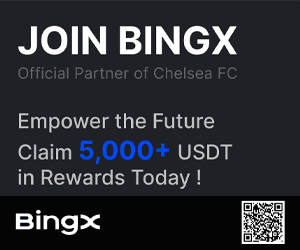Blockchain Education
Exploring Cross-Chain Communication Protocols: Cosmos and Polkadot

|
Getting your Trinity Audio player ready...
|

Introduction to Cross-Chain Communication Protocols
In the rapidly evolving world of blockchain technology, one of the most significant challenges has been interoperability. The inability of different blockchain networks to communicate and exchange data efficiently has hindered the widespread adoption and utility of decentralized applications (dApps). Enter cross-chain communication protocols, which are designed to bridge this gap. Two of the most prominent projects in this space are Cosmos and Polkadot. Both have garnered significant attention for their unique approaches to solving the interoperability issue.
What Are Cross-Chain Communication Protocols?
Cross-chain communication protocols are mechanisms that allow different blockchain networks to interact and exchange data without the need for intermediaries. These protocols are crucial for creating a more connected and efficient blockchain ecosystem. They enable the transfer of assets, data, and smart contracts between various blockchains, which can lead to increased liquidity, better user experiences, and a more robust and resilient network.
Overview of Cosmos
What is Cosmos?
Cosmos is a decentralized network of independent, scalable, and interoperable blockchains. It aims to create an “Internet of Blockchains” where different blockchains can communicate and transact with one another seamlessly. Cosmos uses a modular architecture based on the Tendermint consensus algorithm, which is known for its high throughput and low latency.
Key Features of Cosmos
- Inter-Blockchain Communication (IBC) Protocol: The IBC protocol is the backbone of Cosmos, enabling blockchains within the network to communicate and transfer assets.
- Modular Design: Cosmos allows developers to build custom blockchains using the Cosmos SDK, which provides a set of pre-built modules and tools.
- Tendermint Consensus: The Tendermint consensus algorithm ensures fast and secure transactions across the network.
- Hub and Zone Architecture: Cosmos operates on a hub and zone model, where the Cosmos Hub serves as the central point of communication and coordination.
Use Cases and Benefits
- Multi-Asset Wallets: Wallets can support multiple cryptocurrencies from different blockchains, enhancing user convenience.
- Decentralized Exchanges (DEXs): DEXs can offer a wide range of trading pairs and liquidity by connecting to multiple blockchains.
- Cross-Chain DeFi: DeFi applications can leverage assets from different blockchains to offer more diverse and efficient financial services.
Overview of Polkadot
What is Polkadot?
Polkadot is a multi-chain network that allows for the creation and connection of specialized blockchains, known as parachains, which can share security and interoperability. Polkadot aims to provide a scalable and secure environment for the development and operation of these blockchains.
Key Features of Polkadot
- Relay Chain: The central chain that coordinates and secures the network of parachains.
- Parachains: Specialized blockchains that are built to solve specific problems and can interoperate with each other.
- Parathreads: Pay-as-you-go parachains that can be used for smaller projects or temporary needs.
- Bridges: Connect Polkadot to external blockchains like Ethereum, enabling cross-chain communication and asset transfers.
Use Cases and Benefits
- Cross-Chain DEXs: Similar to Cosmos, Polkadot can support DEXs that offer a wide range of trading pairs and liquidity.
- Cross-Chain DeFi: DeFi applications can benefit from the interoperability and security provided by Polkadot.
- Specialized Blockchains: Developers can create blockchains tailored to specific industries or use cases, such as supply chain management or gaming.
Comparing Cosmos and Polkadot
Architecture
- Cosmos: Uses a hub and zone model, where the Cosmos Hub is the central point of communication.
- Polkadot: Relies on a relay chain and a network of parachains, with bridges connecting to external blockchains.
Consensus Mechanisms
- Cosmos: Employs the Tendermint Byzantine Fault Tolerance (BFT) consensus algorithm.
- Polkadot: Uses a combination of NPoS (Nominated Proof of Stake) and GRANDPA (GHOST-based Recursive Ancestor Deriving Prefix Agreement) for consensus.
Interoperability
- Cosmos: Utilizes the IBC protocol for cross-chain communication.
- Polkadot: Leverages the Substrate framework and bridges for interoperability.
Practical Tips for Developers and Users
For Developers
- Choose the Right Protocol: Consider the specific needs of your project. If you require a high degree of customization and modular design, Cosmos might be the better choice. For specialized blockchains and shared security, Polkadot is a strong contender.
- Leverage SDKs and Tools: Both projects provide extensive SDKs and development tools. Cosmos SDK is particularly robust for custom blockchain development, while Substrate offers a set of modular components.
- Stay Updated: The blockchain landscape is constantly evolving. Stay informed about the latest updates and improvements in Cosmos and Polkadot to ensure your project remains cutting-edge.
For Users
- Multi-Asset Wallets: Use wallets that support multiple cryptocurrencies and assets from different blockchains to take advantage of the interoperability provided by Cosmos and Polkadot.
- Explore DEXs: Check out decentralized exchanges that are built on or connected to these networks to access a wider range of trading pairs and better liquidity.
- Security Best Practices: Always follow best practices for security, such as using hardware wallets and keeping your software up to date.
Current Data and Insights
Market Adoption
- Cosmos: As of 2023, the Cosmos ecosystem has grown significantly, with numerous projects and dApps built on the network. The IBC protocol has been adopted by over 100 blockchains, facilitating a robust interconnected network.
- Polkadot: Polkadot has also seen substantial growth, with over 300 projects in its ecosystem. The Kusama network, Polkadot’s canary network, has been instrumental in testing and validating new parachains and features.
Challenges and Solutions
- Scalability: Both Cosmos and Polkadot are designed with scalability in mind. Cosmos’ modular design and Polkadot’s relay chain architecture help mitigate the scalability issues faced by single-chain blockchains.
- Regulatory Compliance: As blockchain technology gains more mainstream adoption, regulatory compliance becomes increasingly important. Both projects are working on solutions to ensure that their networks can operate within the legal frameworks of different jurisdictions.
Future Developments
Upcoming Features
- Cosmos: The team is working on improving the IBC protocol and expanding the ecosystem with more blockchain integrations. They are also exploring the integration of Layer 2 solutions to further enhance scalability.
- Polkadot: The development roadmap includes the introduction of shared security upgrades, new parachain slots, and enhanced bridge capabilities to connect with more external blockchains.
Community and Research
- Cosmos: The Cosmos community is highly active, with regular hackathons, meetups, and development challenges. Research efforts are focused on optimizing the IBC protocol and exploring new use cases.
- Polkadot: Polkadot has a strong community and research arm, with continuous innovation in consensus algorithms, parachain design, and cross-chain communication. The Web3 Foundation and the Polkadot Research Institute are key contributors to this research.
Conclusion
Cross-chain communication protocols like Cosmos and Polkadot are pivotal in the evolution of the blockchain ecosystem. They offer solutions to the interoperability and scalability challenges that have long plagued the industry. For developers, these protocols provide powerful tools and frameworks to build innovative and efficient dApps. For users, they offer a more seamless and secure experience with access to a broader range of assets and services.
Whether you choose to explore Cosmos or Polkadot, the key is to stay informed and engaged with the community. By leveraging the strengths of these protocols, you can contribute to building a more connected and robust blockchain future.
Call to Action
If you are a developer or a blockchain enthusiast, consider joining the Cosmos or Polkadot community to learn more and contribute to their ongoing projects. Both ecosystems are rich with opportunities and resources to help you build and grow in the world of cross-chain communication.
SEO Optimized Tags
- cosmos
- polkadot
- cross-chain communication
- blockchain interoperability
- IBC protocol
- decentralized exchanges
- Title: Exploring Cross-Chain Communication Protocols: Cosmos and Polkadot
- Meta Description: Dive into the world of cross-chain communication protocols with this comprehensive guide on Cosmos and Polkadot. Discover how these innovative projects are revolutionizing the blockchain landscape and enabling seamless interoperability between different blockchain networks.
- Introduction to Cross-Chain Communication Protocols
- In the rapidly evolving world of blockchain technology, one of the most significant challenges has been interoperability. The inability of different blockchain networks to communicate and exchange data efficiently has hindered the widespread adoption and utility of decentralized applications (dApps). Enter cross-chain communication protocols, which are designed to bridge this gap. Two of the most prominent projects in this space are Cosmos and Polkadot. Both have garnered significant attention for their unique approaches to solving the interoperability issue.
- What Are Cross-Chain Communication Protocols?
- Cross-chain communication protocols are mechanisms that allow different blockchain networks to interact and exchange data without the need for intermediaries. These protocols are crucial for creating a more connected and efficient blockchain ecosystem. They enable the transfer of assets, data, and smart contracts between various blockchains, which can lead to increased liquidity, better user experiences, and a more robust and resilient network.
- Overview of Cosmos
- What is Cosmos?
- Cosmos is a decentralized network of independent, scalable, and interoperable blockchains. It aims to create an “Internet of Blockchains” where different blockchains can communicate and transact with one another seamlessly. Cosmos uses a modular architecture based on the Tendermint consensus algorithm, which is known for its high throughput and low latency.
- Key Features of Cosmos
- Inter-Blockchain Communication (IBC) Protocol: The IBC protocol is the backbone of Cosmos, enabling blockchains within the network to communicate and transfer assets.
- Modular Design: Cosmos allows developers to build custom blockchains using the Cosmos SDK, which provides a set of pre-built modules and tools.
- Tendermint Consensus: The Tendermint consensus algorithm ensures fast and secure transactions across the network.
- Hub and Zone Architecture: Cosmos operates on a hub and zone model, where the Cosmos Hub serves as the central point of communication and coordination.
- Use Cases and Benefits
- Multi-Asset Wallets: Wallets can support multiple cryptocurrencies from different blockchains, enhancing user convenience.
- Decentralized Exchanges (DEXs): DEXs can offer a wide range of trading pairs and liquidity by connecting to multiple blockchains.
- Cross-Chain DeFi: DeFi applications can leverage assets from different blockchains to offer more diverse and efficient financial services.
- Overview of Polkadot
- What is Polkadot?
- Polkadot is a multi-chain network that allows for the creation and connection of specialized blockchains, known as parachains, which can share security and interoperability. Polkadot aims to provide a scalable and secure environment for the development and operation of these blockchains.
- Key Features of Polkadot
- Relay Chain: The central chain that coordinates and secures the network of parachains.
- Parachains: Specialized blockchains that are built to solve specific problems and can interoperate with each other.
- Parathreads: Pay-as-you-go parachains that can be used for smaller projects or temporary needs.
- Bridges: Connect Polkadot to external blockchains like Ethereum, enabling cross-chain communication and asset transfers.
- Use Cases and Benefits
- Cross-Chain DEXs: Similar to Cosmos, Polkadot can support DEXs that offer a wide range of trading pairs and liquidity.
- Cross-Chain DeFi: DeFi applications can benefit from the interoperability and security provided by Polkadot.
- Specialized Blockchains: Developers can create blockchains tailored to specific industries or use cases, such as supply chain management or gaming.
- Comparing Cosmos and Polkadot
- Architecture
- Cosmos: Uses a hub and zone model, where the Cosmos Hub is the central point of communication.
- Polkadot: Relies on a relay chain and a network of parachains, with bridges connecting to external blockchains.
- Consensus Mechanisms
- Cosmos: Employs the Tendermint Byzantine Fault Tolerance (BFT) consensus algorithm.
- Polkadot: Uses a combination of NPoS (Nominated Proof of Stake) and GRANDPA (GHOST-based Recursive Ancestor Deriving Prefix Agreement) for consensus.
- Interoperability
- Cosmos: Utilizes the IBC protocol for cross-chain communication.
- Polkadot: Leverages the Substrate framework and bridges for interoperability.
- Practical Tips for Developers and Users
- For Developers
- Choose the Right Protocol: Consider the specific needs of your project. If you require a high degree of customization and modular design, Cosmos might be the better choice. For specialized blockchains and shared security, Polkadot is a strong contender.
- Leverage SDKs and Tools: Both projects provide extensive SDKs and development tools. Cosmos SDK is particularly robust for custom blockchain development, while Substrate offers a set of modular components.
- Stay Updated: The blockchain landscape is constantly evolving. Stay informed about the latest updates and improvements in Cosmos and Polkadot to ensure your project remains cutting-edge.
- For Users
- Multi-Asset Wallets: Use wallets that support multiple cryptocurrencies and assets from different blockchains to take advantage of the interoperability provided by Cosmos and Polkadot.
- Explore DEXs: Check out decentralized exchanges that are built on or connected to these networks to access a wider range of trading pairs and better liquidity.
- Security Best Practices: Always follow best practices for security, such as using hardware wallets and keeping your software up to date.
- Current Data and Insights
- Market Adoption
- Cosmos: As of 2023, the Cosmos ecosystem has grown significantly, with numerous projects and dApps built on the network. The IBC protocol has been adopted by over 100 blockchains, facilitating a robust interconnected network.
- Polkadot: Polkadot has also seen substantial growth, with over 300 projects in its ecosystem. The Kusama network, Polkadot’s canary network, has been instrumental in testing and validating new parachains and features.
- Challenges and Solutions
- Scalability: Both Cosmos and Polkadot are designed with scalability in mind. Cosmos’ modular design and Polkadot’s relay chain architecture help mitigate the scalability issues faced by single-chain blockchains.
- Regulatory Compliance: As blockchain technology gains more mainstream adoption, regulatory compliance becomes increasingly important. Both projects are working on solutions to ensure that their networks can operate within the legal frameworks of different jurisdictions.
- Future Developments
- Upcoming Features
- Cosmos: The team is working on improving the IBC protocol and expanding the ecosystem with more blockchain integrations. They are also exploring the integration of Layer 2 solutions to further enhance scalability.
- Polkadot: The development roadmap includes the introduction of shared security upgrades, new parachain slots, and enhanced bridge capabilities to connect with more external blockchains.
- Community and Research
- Cosmos: The Cosmos community is highly active, with regular hackathons, meetups, and development challenges. Research efforts are focused on optimizing the IBC protocol and exploring new use cases.
- Polkadot: Polkadot has a strong community and research arm, with continuous innovation in consensus algorithms, parachain design, and cross-chain communication. The Web3 Foundation and the Polkadot Research Institute are key contributors to this research.
- Conclusion
- Cross-chain communication protocols like Cosmos and Polkadot are pivotal in the evolution of the blockchain ecosystem. They offer solutions to the interoperability and scalability challenges that have long plagued the industry. For developers, these protocols provide powerful tools and frameworks to build innovative and efficient dApps. For users, they offer a more seamless and secure experience with access to a broader range of assets and services.
- Whether you choose to explore Cosmos or Polkadot, the key is to stay informed and engaged with the community. By leveraging the strengths of these protocols, you can contribute to building a more connected and robust blockchain future.
- Call to Action
- If you are a developer or a blockchain enthusiast, consider joining the Cosmos or Polkadot community to learn more and contribute to their ongoing projects. Both ecosystems are rich with opportunities and resources to help you build and grow in the world of cross-chain communication.
Blockchain Education
How Token Standards Like ERC-20 and BEP-20 Shape Ecosystems


How Token Standards Like ERC-20 and BEP-20 Shape Ecosystems
Introduction
In the rapidly evolving world of blockchain and cryptocurrencies, the importance of token standards cannot be overstated. Token standards like ERC-20 and BEP-20 shape ecosystems by providing rules and guidelines for creating and managing tokens on their respective networks. Understanding these standards is vital for developers, investors, and users alike, as they enhance interoperability, facilitate DeFi applications, and foster innovation. This comprehensive article dives deep into the implications of these token standards, their common features, and how they influence blockchain ecosystems.
What Are Token Standards?
Token standards are essentially protocols that define how tokens are created, transferred, and how they function within their respective ecosystems. They ensure a uniform approach that developers can rely on when creating new cryptocurrencies or tokens. The two most significant standards today are:
- ERC-20 – Ethereum Request for Comment 20, used on the Ethereum network.
- BEP-20 – Binance Smart Chain Evolution Proposal 20, used on the Binance Smart Chain.
Understanding these standards is crucial, especially when considering their impact on decentralized finance (DeFi), token trading, and dApps (decentralized applications).
The Significance of ERC-20
Overview of ERC-20
ERC-20 is the most widely used token standard on the Ethereum network, introduced in 2015. It allows for the creation of fungible tokens, meaning each token is identical and interchangeable with another. This standard has fueled the ICO (Initial Coin Offering) boom, as it allows new projects to easily launch their tokens on Ethereum, thereby enjoying its vast ecosystem.
Features of ERC-20
Some of the key features of ERC-20 include:
- Interoperability: Tokens created under this standard can interact seamlessly with various Ethereum-based applications, exchanges, and wallets.
- Smart Contracts: ERC-20 tokens rely heavily on Ethereum’s smart contract functionality, which automates and governs the token’s operations.
- Standardized Functions: ERC-20 tokens implement a set of standardized functions (such as transfer, approve, and transferFrom), which simplifies the process for developers.
Impact on Ecosystems
The widespread adoption of ERC-20 has allowed massive growth within the Ethereum ecosystem. Projects often prefer ERC-20 tokens, providing investors and users with myriad options across decentralized exchanges (DEXs), DeFi applications, and more.
The Role of BEP-20
Overview of BEP-20
BEP-20 is a token standard designed specifically for the Binance Smart Chain (BSC), which has gained significant popularity due to its lower fees and faster transaction times compared to Ethereum. BEP-20 tokens are also fungible and compatible with Ethereum’s ERC-20 tokens, offering greater flexibility and interoperability.
Key Features of BEP-20
Some salient features of BEP-20 include:
- Lower Fees: Transactions involving BEP-20 tokens generally incur lower gas fees compared to ERC-20 transactions, making them more accessible for smaller investors.
- Compatibility: BEP-20 tokens can also interact with ERC-20 tokens, thus fostering a more integrated ecosystem across different blockchain systems.
- Customizability: Developers can easily customize their tokens under the BEP-20 standard to fit unique project requirements.
Ecosystem Growth
The emergence of BEP-20 has driven a surge of innovation, particularly in the DeFi sector. Many decentralized applications (dApps) and financial products have launched on BSC, taking advantage of the standard’s flexibility and cost-effectiveness.
Comparing ERC-20 and BEP-20
While both ERC-20 and BEP-20 have similar functionalities and aim to foster robust ecosystems, several differences set them apart:
| Feature | ERC-20 | BEP-20 |
|---|---|---|
| Blockchain | Ethereum | Binance Smart Chain |
| Transaction Fees | Generally higher | Generally lower |
| Speed | Slower transactions | Faster transactions |
| Ecosystem | Extensive DeFi options | Rapidly growing DeFi |
| Token Compatibility | Primarily Ethereum-based | Interoperable with Ethereum-based tokens |
The Influence on DeFi and dApps
DeFi Revolution
The rise of token standards like ERC-20 and BEP-20 has spearheaded the DeFi revolution, enabling:
- Liquidity Pools: Users can provide liquidity using various tokens, earning returns on their investments.
- Lending Protocols: Token standards allow peer-to-peer lending solutions that don’t require intermediaries.
- Yield Farming: Investors can maximize returns by staking tokens and participating in decentralized protocols.
dApp Development
With robust token standards in place, developers can focus on creating innovative dApps. These applications can leverage token functionalities, allowing for enhanced user experiences and extensive integration across platforms. Additionally, developers enjoy a larger user base, as these standards have established trust and interoperability within the ecosystems.
Conclusion
Token standards like ERC-20 and BEP-20 shape ecosystems in ways that enhance interoperability, streamline development, and spawn a plethora of financial applications. As blockchain technology and DeFi continue to evolve, these standards will play a crucial role in supporting innovation and driving adoption.
Understanding the intricacies of these token standards not only empowers developers to create more effective applications but also enables investors and users to navigate the burgeoning landscape of blockchain technology wisely.
Call to Action: Stay informed and consider how you can leverage token standards in your projects or investments. Embrace the future and explore the endless possibilities within the blockchain ecosystem!
Blockchain Education
What Are Smart Contracts and How Do They Work?


What Are Smart Contracts and How Do They Work?
Introduction
In the realm of blockchain technology and cryptocurrencies, one term that surfaces frequently is “smart contracts.” But what are smart contracts and how do they work? This article demystifies this innovative concept, explains its functioning, and sheds light on its growing importance in various sectors.
What Are Smart Contracts?
Smart contracts are self-executing contracts with the terms of the agreement directly written into code. They automatically enforce and execute the terms of the contract once certain conditions are met. Smart contracts run on blockchain technology, making them secure, transparent, and immutable.
Key Features of Smart Contracts
- Self-Execution: Smart contracts automatically execute actions based on predefined rules. This eliminates the need for intermediaries.
- Transparency: All parties involved can see the terms and conditions of the contract, creating trust and reducing disputes.
- Security: Smart contracts are secured through cryptography, making them resistant to tampering and fraud.
- Cost-Effectiveness: By removing intermediaries, smart contracts can significantly reduce transaction costs.
How Do Smart Contracts Work?
1. Creation
Smart contracts are created using programming languages such as Solidity (commonly used with Ethereum) or other blockchain-specific languages. Developers encode the agreement’s terms and conditions in the smart contract’s code.
2. Deployment
Once created, the smart contract is deployed onto a blockchain platform. This deployment ensures that the contract is immutable and accessible to all parties involved.
3. Execution
The contract will execute when the predefined conditions are met. For example, if a specific date arrives, or certain data inputs are received, the contract triggers the agreed actions.
4. Verification
Once executed, the network nodes verify the actions taken by the smart contract, ensuring that all conditions were satisfied appropriately.
5. Settlement
After verification, the results of the contract (such as money transfer or asset exchange) are executed, and the transactions are recorded onto the blockchain.
Advantages of Smart Contracts
Smart contracts offer a plethora of advantages, particularly in how they enhance efficiency and security in transactions:
- Reduced Costs: By automating processes, smart contracts cut down on transaction fees typically associated with intermediaries.
- Faster Transactions: Traditional contracts often require human intervention and processing time. Smart contracts execute in real-time, speeding up the transaction process.
- Increased Trust: With the entire contract visible on the blockchain, participants can trust that the terms are being adhered to without needing third-party validation.
Real-World Applications of Smart Contracts
1. Financial Services
Smart contracts are revolutionizing industries such as banking and insurance. They can automate loan processing and claims management, significantly reducing administrative burdens.
2. Supply Chain Management
In supply chains, smart contracts can track the movement of goods. They ensure all parties fulfill their obligations before payment is released, thus increasing accountability.
3. Real Estate Transactions
Smart contracts can facilitate property sales by automating escrow services and recording transactions on the blockchain, ensuring transparency and reducing fraud.
4. Digital Identity Verification
Smart contracts can be used to create decentralized digital identities, allowing individuals to control their personal data while providing necessary verification to third parties.
Challenges Facing Smart Contracts
While the benefits of smart contracts are numerous, there are also challenges that need addressing:
- Coding Errors: If a smart contract is poorly coded, it can lead to unintended consequences or vulnerabilities.
- Legal Status: The legal recognition of smart contracts varies by jurisdiction, which can complicate their adoption.
- Interoperability: Different blockchains may have varying standards, making it challenging for smart contracts to work seamlessly across platforms.
Conclusion
Understanding what are smart contracts and how do they work is crucial in navigating the rapidly evolving technological landscape. As industries continue to integrate blockchain technology, smart contracts offer a promising future for greater efficiency and security in transactions.
Call to Action
Are you ready to leverage smart contracts in your business? Explore the possibilities they present and consider how you can integrate them into your operations for streamlined efficiency and transparency.
Blockchain Education
The Top 5 Blockchain Lottery Platforms Revolutionizing Gaming in 2025


The Top 5 Blockchain Lottery Platforms Revolutionizing Gaming in 2025
Blockchain technology has disrupted industries worldwide, and the online lottery sector is no exception. By leveraging blockchain’s inherent transparency, security, and fairness, these platforms are redefining trust in gaming. As of 2025, several blockchain lottery platforms have emerged as leaders, offering innovative features, robust reliability, and exceptional user experiences. In this article, we explore the top five platforms that are setting new standards in the blockchain lottery space.
1. Xalora: Pioneering Transparency and Decentralization
Xalora stands at the forefront of blockchain lotteries, offering a fully decentralized platform powered by cutting-edge smart contracts. Its commitment to transparency and fairness has made it the gold standard for blockchain-based gaming.
Key Features of Xalora:
- Provably Fair System: Every draw on Xalora is verifiable on the blockchain, ensuring complete transparency and eliminating any possibility of manipulation.
- Smart Contract Automation: Prizes are distributed instantly after each draw, removing delays and enhancing user trust.
- Cross-Chain Compatibility: Xalora supports multiple blockchain networks, allowing users to participate with their preferred cryptocurrencies.
- Low Transaction Costs: By reducing overhead costs associated with traditional lotteries, Xalora offers an economical alternative for players.
- Global Accessibility: Unlike conventional lotteries restricted by geography, Xalora is accessible to users worldwide, democratizing participation.
Xalora’s intuitive interface caters to both newcomers and seasoned crypto enthusiasts, while its community-driven ethos fosters loyalty and growth. This combination of innovation and inclusivity has cemented Xalora’s position as a leader in the blockchain lottery space.
2. LuckyBlock: Tokenized Innovation
LuckyBlock has carved out a niche for itself with its unique token-based ecosystem, blending lottery participation with cryptocurrency investment opportunities.
Why LuckyBlock Stands Out:
- Native Token Integration: Users engage with LuckyBlock using its native token, which not only facilitates participation but also offers potential value appreciation over time.
- Transparent Random Number Generation (RNG): LuckyBlock employs a provably fair RNG system, ensuring every draw is unbiased and trustworthy.
- Community-Centric Rewards: Beyond lottery winnings, participants benefit from the platform’s tokenomics, creating additional incentives for long-term engagement.
LuckyBlock’s innovative approach to combining gaming and blockchain economics has earned it a loyal following among crypto-savvy users.
3. PoolTogether: The No-Loss Lottery
PoolTogether introduces a groundbreaking concept—the “no-loss lottery.” Unlike traditional lotteries where participants risk losing their stake, PoolTogether allows users to retain their principal while competing for prizes generated from pooled interest.
What Makes PoolTogether Unique:
- Risk-Free Participation: Players deposit funds into a shared pool, earning interest collectively. Prizes are awarded from the accrued interest, ensuring no one loses their initial investment.
- Smart Contract Management: Automated smart contracts handle deposits, prize distributions, and withdrawals, providing a seamless user experience.
- Gamified Savings: By combining entertainment with financial responsibility, PoolTogether appeals to users seeking a fun yet prudent way to grow their assets.
This innovative model has attracted a diverse audience, from casual gamers to those looking for creative ways to save and earn.
4. TrueFlip: Transparency Meets Innovation
TrueFlip distinguishes itself through its commitment to complete transparency and a diverse range of blockchain-based games. While rooted in traditional lottery mechanics, the platform incorporates modern gameplay elements to enhance user engagement.
Key Highlights of TrueFlip:
- Publicly Auditable Results: All game outcomes are recorded on the blockchain and available for public verification, reinforcing trust in the system.
- Diverse Game Portfolio: Beyond lotteries, TrueFlip offers various blockchain games, catering to different preferences and keeping the experience fresh.
- Fairness Guarantee: The platform’s transparent random number generation ensures that every participant has an equal chance of winning.
TrueFlip’s dedication to fairness and innovation has earned it a reputation as a reliable player in the competitive blockchain gaming industry.
5. FireLotto: Global Reach with Decentralized Security
FireLotto rounds out our list as a global blockchain lottery platform designed for accessibility and security. Supporting multiple cryptocurrencies, FireLotto leverages advanced decentralized technologies to ensure fairness and efficiency.
Notable Features of FireLotto:
- Decentralized RNG: FireLotto employs a tamper-proof random number generator, making predictions or manipulation impossible.
- Automated Smart Contracts: From ticket purchases to prize payouts, all processes are handled automatically via smart contracts, minimizing human intervention.
- Multilingual Support: With interfaces available in multiple languages, FireLotto caters to a broad international audience.
- User-Friendly Design: Its intuitive interface makes it easy for users of all backgrounds to participate without technical barriers.
FireLotto’s focus on inclusivity and technological robustness has helped it gain traction across diverse markets worldwide.
The Future of Blockchain Lotteries
As blockchain technology continues to advance, platforms like Xalora are leading the charge in transforming how we perceive and interact with lotteries. These platforms offer unparalleled advantages over traditional systems, including:
- Transparency: Every transaction and outcome is recorded immutably on the blockchain.
- Efficiency: Automated processes reduce delays and operational costs.
- Accessibility: Geographical restrictions are eliminated, opening up opportunities for global participation.
For anyone seeking a more transparent, secure, and engaging lottery experience, these blockchain platforms represent the future of chance-based gaming. Whether you’re a cryptocurrency enthusiast or simply someone who values fairness and innovation, blockchain lotteries provide benefits that traditional systems simply cannot match.
Conclusion
The rise of blockchain lottery platforms marks a significant shift in the gaming landscape. Xalora, LuckyBlock, PoolTogether, TrueFlip, and FireLotto exemplify the best of what this technology has to offer—transparency, security, and accessibility. As these platforms continue to evolve, they pave the way for a new era of gaming that prioritizes fairness and user empowerment.
If you’re ready to explore the next generation of online lotteries, look no further than these trailblazing platforms. They embody the perfect fusion of blockchain technology and chance-based entertainment, offering a glimpse into the limitless possibilities of decentralized gaming.
-

 Security & Privacy2 months ago
Security & Privacy2 months agoAdvanced Techniques for Securing Multi-Signature Wallets
-

 Crypto Basics2 months ago
Crypto Basics2 months agoHow to Spot Fake News in the Crypto Space: A Comprehensive Guide for Savvy Investors
-

 Video2 months ago
Video2 months agoTop Mistakes New Investors Make in Crypto
-

 Investment Strategies2 months ago
Investment Strategies2 months agoPsychological Aspects of Trading: Mastering Emotions for Financial Success
-

 Video2 months ago
Video2 months agoThe Easiest Way to Buy NFTs: A Step-by-Step Guide
-

 Regulations & Policy Updates2 months ago
Regulations & Policy Updates2 months agoLegal Frameworks for Launching Security Tokens: A Comprehensive Guide for 2025
-

 Web3 & Metaverse2 months ago
Web3 & Metaverse2 months agoTitle: Implementing Zero-Knowledge Proofs in Web3 Applications: A Comprehensive Guide to Security and Privacy
-

 Video2 months ago
Video2 months agoPublic vs Private Blockchain | Difference Between Public and Private Blockchain



























